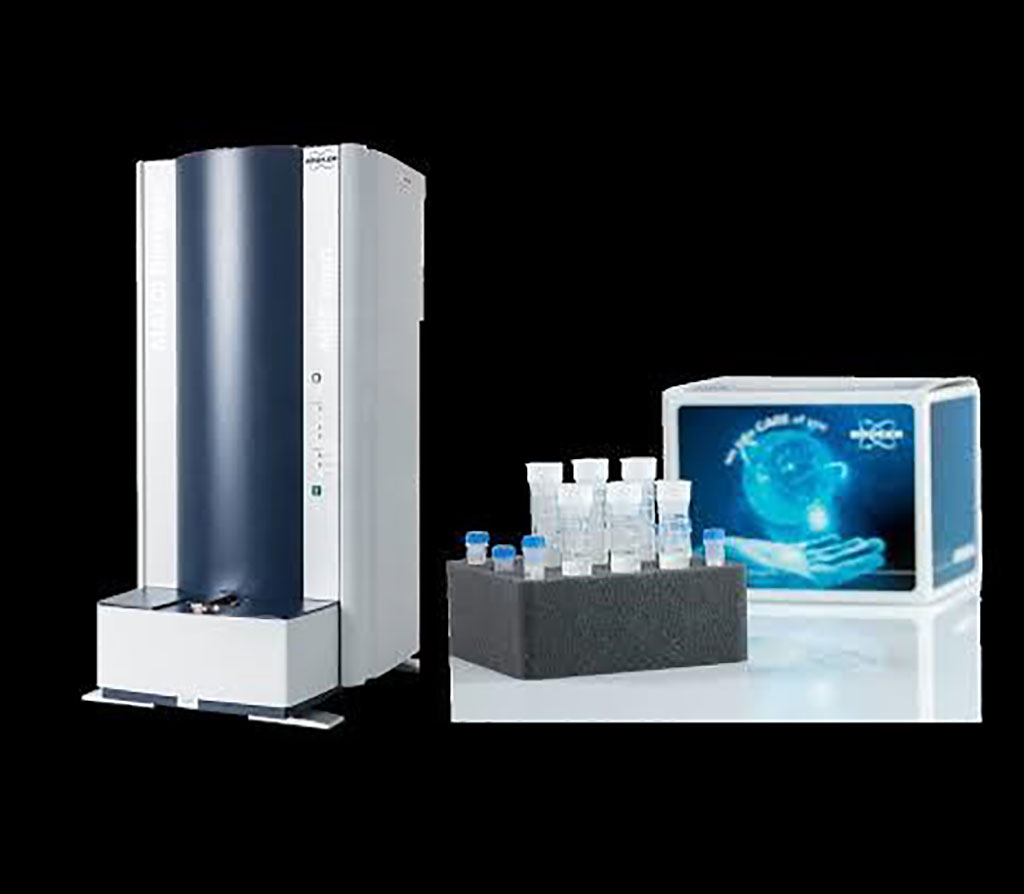MALDI-TOF-MS Evaluated for Rapid Diagnosis of Bacteremia and Fungemia
By LabMedica International staff writers
Posted on 13 Jan 2021
When sepsis occurs, it is essential to begin an effective and potent antibacterial or antifungal treatment as soon as possible as early administration and achievement of microbicidal concentrations are associated with better survival in community-acquired and hospital-acquired septicemia.Posted on 13 Jan 2021
Rapid species identification is now possible by several techniques directly from positive blood cultures. It allows a first quick adaptation of empirical treatment if inappropriate, according to the species identified. However, available techniques are either expensive such as multiplex polymerase chain reaction (PCR) or fluorescence in situ hybridization using peptide nucleic acid probes (PNA-FISH), that are delayed by a first 4 to 8 hours subculture on agar medium or are time-consuming.

Image: The Microflex LT MALDI-TOF mass spectrometer and Rapid Sepsityper kit for the identification of pathogenic organisms (Photo courtesy of Bruker Daltonics).
Medical Microbiologists at the Université Grenoble Alpes (Grenoble, France) analyzed 379 positive blood cultures bottles and all the blood cultures were incubated in a BD BACTEC FX instrument (Becton Dickinson, Franklin Lakes, NJ, USA). Among those, 299 samples were selected as they corresponded to the first positive blood culture bottle for all new episodes of bacteremia during random days. Fifty-one positive blood cultures bottles were also included in the study in order to compare identification rates obtained on aerobic or anaerobic bottles for facultative anaerobes (27 second positive bottle of a pair of blood culture already included and 12 additional pairs of positive blood culture).
Matrix Assisted Laser Desorption Ionization—Time of Flight Mass Spectrometry (MALDI-TOF-MS) identification was performed using either the Rapid protocol (10 minutes turnaround time) of the Sepsityper kit (Bruker Daltonics, Bremen, Germany) or the Standard procedure (30 minutes turnaround time). MALDI‑TOF-MS data analysis and evaluation of performance were all acquired on a Bruker Daltonics’ Microflex LT MALDI-TOF mass spectrometer. To provide an optimized diagnosis strategy the team also evaluated the benefit of using an on-plate formic acid extraction step and compared identification rates depending on the type of positive blood culture bottles (aerobic or anaerobic) for facultative anaerobes.
The investigators reported that identification rates were determined prospectively on 350 bacterial and 29 fungal positive blood cultures, and compared to conventional diagnostic method. Their rapid diagnosis strategy (Rapid Sepsityper protocol: one spot with and one without formic acid extraction step) combined to MBT-Sepsityper module provided 65.4%, 78.9% and 62% reliable identification to the species level of monomicrobial positive blood cultures growing respectively Gram-positive, Gram-negative bacteria or yeast.
Importantly, identification rates of Gram-positive bacteria were higher in anaerobic than in aerobic bottles (77.8% versus 22.2%), if formic acid extraction step was performed (60.8% versus 39.2%) and if specific MBT-Sepsityper module was used (76.2% versus 61.9%), while no significant differences were observed for Gram-negative bacteria. For yeasts identification, formic acid extraction step improved rapid identification rate by 37.9% while the specific MBT-Sepsityper module increased overall performances by 38%, providing up to 89.7% reliable identification if associated with the standard Sepsityper protocol.
The authors concluded that the rapid Sepsityper protocol is an interesting commercial assay for quick bacterial identification in bloodstream infections (BSI) that could allow early adaptation of empirical antibiotic treatment according to the species identified. The study was published on December 9, 2020 in the journal Annals of Clinical Microbiology and Antimicrobials.
Related Links:
Université Grenoble Alpes
Becton Dickinson
Bruker Daltonics







 assay.jpg)






